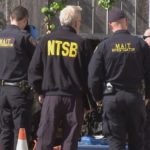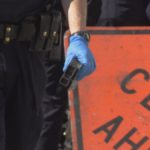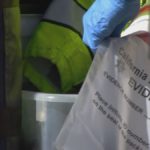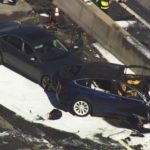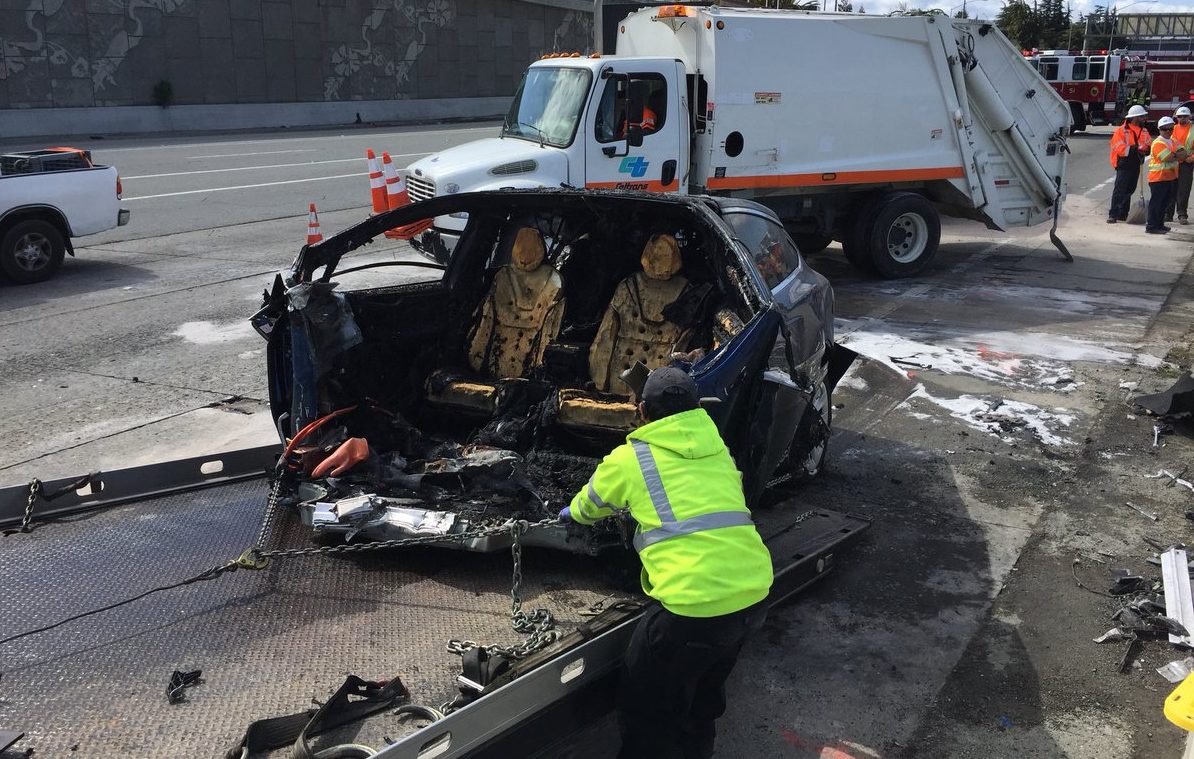
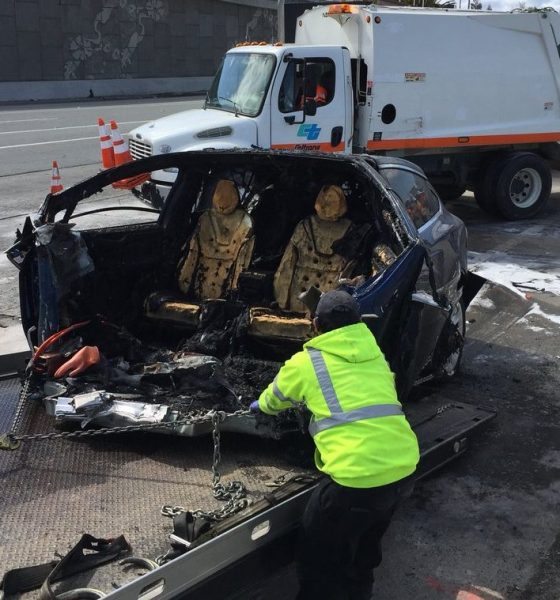
News
Tesla says Autopilot was engaged during Model X fatal crash
Tesla recently released an update confirming that Autopilot was activated on the ill-fated Model X when the SUV crashed into a concrete barrier last Friday near Mountain View, CA.
According to the company’s update, the Model X’s Autopilot was engaged with the car’s adaptive cruise control set to minimum in the moments leading up to the crash. Tesla also noted that the Model X’s driver received several visual and one audible hands-on warning earlier on in the drive. The driver’s hands were not detected on the steering wheel for 6 seconds before the accident occurred as well.
Ultimately, Tesla stated that the driver of the ill-fated Model X had about five seconds and 150 meters of unobstructed view of the concrete divider before the accident took place. Logs from the electric SUV, however, revealed that no action from the driver was taken.
Tesla also highlighted that the absence of a crash attenuator — a highway safety device designed to absorb the impact of a collision — was a key reason why the fatal Model X crash was so severe. Tesla noted that it has “never seen this level of damage to a Model X in any other crash.”

As we noted in a previous report, the crash attenuator, better known as a crash cushion, was destroyed in a vehicular accident 11 days before the fatal Model X crash. This is in line with an image that Tesla provided on its first blog post about the incident, when the company showed a picture of the damaged crash cushion a day before the Model X’s collision.
Local news agency ABC7 News was able to get in touch with the driver of the vehicle that collided with the crash cushion 11 days before the Tesla accident. According to the news agency, the previous crash involved James Barboza, who was driving a 2010 Toyota Prius at 70 mph. Barboza walked away from the crash with lacerations on his face and complaints of pain all over his body. The Toyota Prius driver was eventually arrested for driving under the influence.
In a statement to ABC7, Steven Lawrence — a lawyer who specializes in highway safety — stated that the crash cushion, which could have saved the Model X driver’s life, should have been repaired long before the accident. According to Lawrence, 11 days is far too long to fix a crash cushion, especially in areas where the Model X accident took place.
“Some states have as short as a 3-day repair time for high traffic locations. And if you look at the material in California, this thing should have been repaired within a week. Again, there are a lot of questions about what happened and what went wrong, but it should have been repaired in under 11 days.” Lawrence said.
- The NTSB’s investigation into a fatal Tesla Model X crash continues. [Credit: Dean C. Smith/Twitter]
- The NTSB’s investigation into a fatal Tesla Model X crash continues. [Credit: Dean C. Smith/Twitter]
- The NTSB’s investigation into a fatal Tesla Model X crash continues. [Credit: Dean C. Smith/Twitter]
- The aftermath of a fatal Tesla Model X accident. (Credit: Mercury News/Twitter)
- The aftermath of a fatal Tesla Model X accident. [Credit: Dean C. Smith/Twitter]
- The aftermath of a fatal Tesla Model X accident. (Credit: ABC News Radio/Twitter)
CalTrans issued a statement to the local news agency on Thursday, addressing the delay in its repair of the road safety device. While CalTrans admitted that the crash cushion should have been repaired within 7 days after the 2010 Prius collided with the crash attenuator, the agency noted that storms in the area delayed the repair.
“Once our Maintenance team has been notified, the Department’s goal is to repair or replace damaged guardrail or crash attenuators within 7 days or 5 business days, depending on weather. These are guidelines that our Maintenance staff follow.
“However, as in this case, storms can delay the fix. In this incident, as soon as maintenance was aware of the damaged attenuator, efforts were made to place cones or safety barricades at the site, and the replacement work was scheduled.”
As noted in a previous report, the Tesla Model X has a 5-star safety rating from the National Highway Traffic Safety Administration (NHTSA), due to its safety features such as its 12-airbag system and its huge crumple zone. Roughly 85,000 successful Autopilot trips have been done by Tesla owners in the same stretch of road as the ill-fated Model X since the driver-assist feature was introduced in 2015, with around 200 trips being conducted every day.

News
Tesla starts showing how FSD will change lives in Europe
Local officials tested the system on narrow country roads and were impressed by FSD’s smooth, human-like driving, with some calling the service a game-changer for everyday life in areas that are far from urban centers.

Tesla has launched Europe’s first public shuttle service using Full Self-Driving (Supervised) in the rural Eifelkreis Bitburg-Prüm region of Germany, demonstrating how the technology can restore independence and mobility for people who struggle with limited transport options.
Local officials tested the system on narrow country roads and were impressed by FSD’s smooth, human-like driving, with some calling the service a game-changer for everyday life in areas that are far from urban centers.
Officials see real impact on rural residents
Arzfeld Mayor Johannes Kuhl and District Administrator Andreas Kruppert personally tested the Tesla shuttle service. This allowed them to see just how well FSD navigated winding lanes and rural roads confidently. Kruppert said, “Autonomous driving sounds like science fiction to many, but we simply see here that it works totally well in rural regions too.” Kuhl, for his part, also noted that FSD “feels like a very experienced driver.”
The pilot complements the area’s “Citizen Bus” program, which provides on-demand rides for elderly residents who can no longer drive themselves. Tesla Europe shared a video of a demonstration of the service, highlighting how FSD gives people their freedom back, even in places where public transport is not as prevalent.
What the Ministry for Economic Affairs and Transport says
Rhineland-Palatinate’s Minister Daniela Schmitt supported the project, praising the collaboration that made this “first of its kind in Europe” possible. As per the ministry, the rural rollout for the service shows FSD’s potential beyond major cities, and it delivers tangible benefits like grocery runs, doctor visits, and social connections for isolated residents.
“Reliable and flexible mobility is especially vital in rural areas. With the launch of a shuttle service using self-driving vehicles (FSD supervised) by Tesla in the Eifelkreis Bitburg-Prüm, an innovative pilot project is now getting underway that complements local community bus services. It is the first project of its kind in Europe.
“The result is a real gain for rural mobility: greater accessibility, more flexibility and tangible benefits for everyday life. A strong signal for innovation, cooperation and future-oriented mobility beyond urban centers,” the ministry wrote in a LinkedIn post.
News
Tesla China quietly posts Robotaxi-related job listing
Tesla China is currently seeking a Low Voltage Electrical Engineer to work on circuit board design for the company’s autonomous vehicles.

Tesla has posted a new job listing in Shanghai explicitly tied to its Robotaxi program, fueling speculation that the company is preparing to launch its dedicated autonomous ride-hailing service in China.
As noted in the listing, Tesla China is currently seeking a Low Voltage Electrical Engineer to work on circuit board design for the company’s autonomous vehicles.
Robotaxi-specific role
The listing, which was shared on social media platform X by industry watcher @tslaming, suggested that Tesla China is looking to fill the role urgently. The job listing itself specifically mentions that the person hired for the role will be working on the Low Voltage Hardware team, which would design the circuit boards that would serve as the nervous system of the Robotaxi.
Key tasks for the role, as indicated in the job listing, include collaboration with PCB layout, firmware, mechanical, program management, and validation teams, among other responsibilities. The role is based in Shanghai.
China Robotaxi launch
China represents a massive potential market for robotaxis, with its dense urban centers and supportive policies in select cities. Tesla has limited permission to roll out FSD in the country, though despite this, its vehicles have been hailed as among the best in the market when it comes to autonomous features. So far, at least, it appears that China supports Tesla’s FSD and Robotaxi rollout.
This was hinted at in November, when Tesla brought the Cybercab to the 8th China International Import Expo (CIIE) in Shanghai, marking the first time that the autonomous two-seater was brought to the Asia-Pacific region. The vehicle, despite not having a release date in China, received a significant amount of interest among the event’s attendees.
Elon Musk
Elon Musk and Tesla AI Director share insights after empty driver seat Robotaxi rides
The executives’ unoccupied tests hint at the rapid progress of Tesla’s unsupervised Robotaxi efforts.

Tesla CEO Elon Musk and AI Director Ashok Elluswamy celebrated Christmas Eve by sharing personal experiences with Robotaxi vehicles that had no safety monitor or occupant in the driver’s seat. Musk described the system’s “perfect driving” around Austin, while Elluswamy posted video from the back seat, calling it “an amazing experience.”
The executives’ unoccupied tests hint at the rapid progress of Tesla’s unsupervised Robotaxi efforts.
Elon and Ashok’s firsthand Robotaxi insights
Prior to Musk and the Tesla AI Director’s posts, sightings of unmanned Teslas navigating public roads were widely shared on social media. One such vehicle was spotted in Austin, Texas, which Elon Musk acknowleged by stating that “Testing is underway with no occupants in the car.”
Based on his Christmas Eve post, Musk seemed to have tested an unmanned Tesla himself. “A Tesla with no safety monitor in the car and me sitting in the passenger seat took me all around Austin on Sunday with perfect driving,” Musk wrote in his post.
Elluswamy responded with a 2-minute video showing himself in the rear of an unmanned Tesla. The video featured the vehicle’s empty front seats, as well as its smooth handling through real-world traffic. He captioned his video with the words, “It’s an amazing experience!”
Towards Unsupervised operations
During an xAI Hackathon earlier this month, Elon Musk mentioned that Tesla owed be removing Safety Monitors from its Robotaxis in Austin in just three weeks. “Unsupervised is pretty much solved at this point. So there will be Tesla Robotaxis operating in Austin with no one in them. Not even anyone in the passenger seat in about three weeks,” he said. Musk echoed similar estimates at the 2025 Annual Shareholder Meeting and the Q3 2025 earnings call.
Considering the insights that were posted Musk and Elluswamy, it does appear that Tesla is working hard towards operating its Robotaxis with no safety monitors. This is quite impressive considering that the service was launched just earlier this year.
